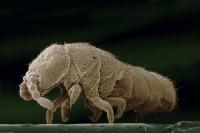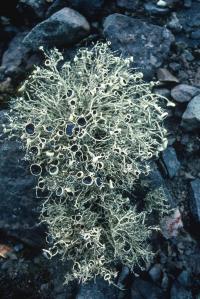
Antarctic springtail - Cryptopygus antarcticus. False colour, scanning electron-micrograph. Cryptopygus is one of the most successful terrestrial arthropods to have colonised the Antarctic continent. Although only 1-2 mm long and weighing only a few micro-grams, it is one of the largest animals to complete its lifecycle on the Antarctic continent. Credit: Pete Bucktrout Springtails, mites, worms and plant life could help solve the mystery of Antarctica’s glacial history according to new research published in the journal Science this week.
Scientists from British Antarctic Survey (BAS) and Massey University New Zealand report that of the evolutionary history of Antarctica’s terrestrial plant and animal life does not reconcile with current reconstructions of past glacial ice extent going back more than 23 million years.
In today’s warm period less than 1 percent of Antarctica is ice-free. It has been assumed that during ice ages there was insufficient ice-free land for Antarctic plant and animal species to survive and evolve. However scientists report that an exceptional long-term evolutionary persistence, isolation, and a striking capability to survive global climate change, appear to be the ‘norm’ rather than the exception for the terrestrial world. 
Lichen, Usnea aurantiaco-atra with abundance of black apothecial discs of varying ages.
Pete Convey of BAS said,
‘Because these groups of invertebrates, plants and microbes occupy such a tiny part of a huge continent climate scientists have tended to ignore them. But recent advances in molecular biology and biogeography show us that they are indeed significant when you are trying to reconstruct a picture of the Earth’s glacial history. It is important now for us to work together with scientists from all disciplines to integrate this new biological evidence in glaciological and climate models. It will help answer the big global questions about past and future climate change and be a valuable contribution to International Polar Year 2007-2008.’
Source : British Antarctic Survey
 Print Article
Print Article Mail to a Friend
Mail to a Friend
